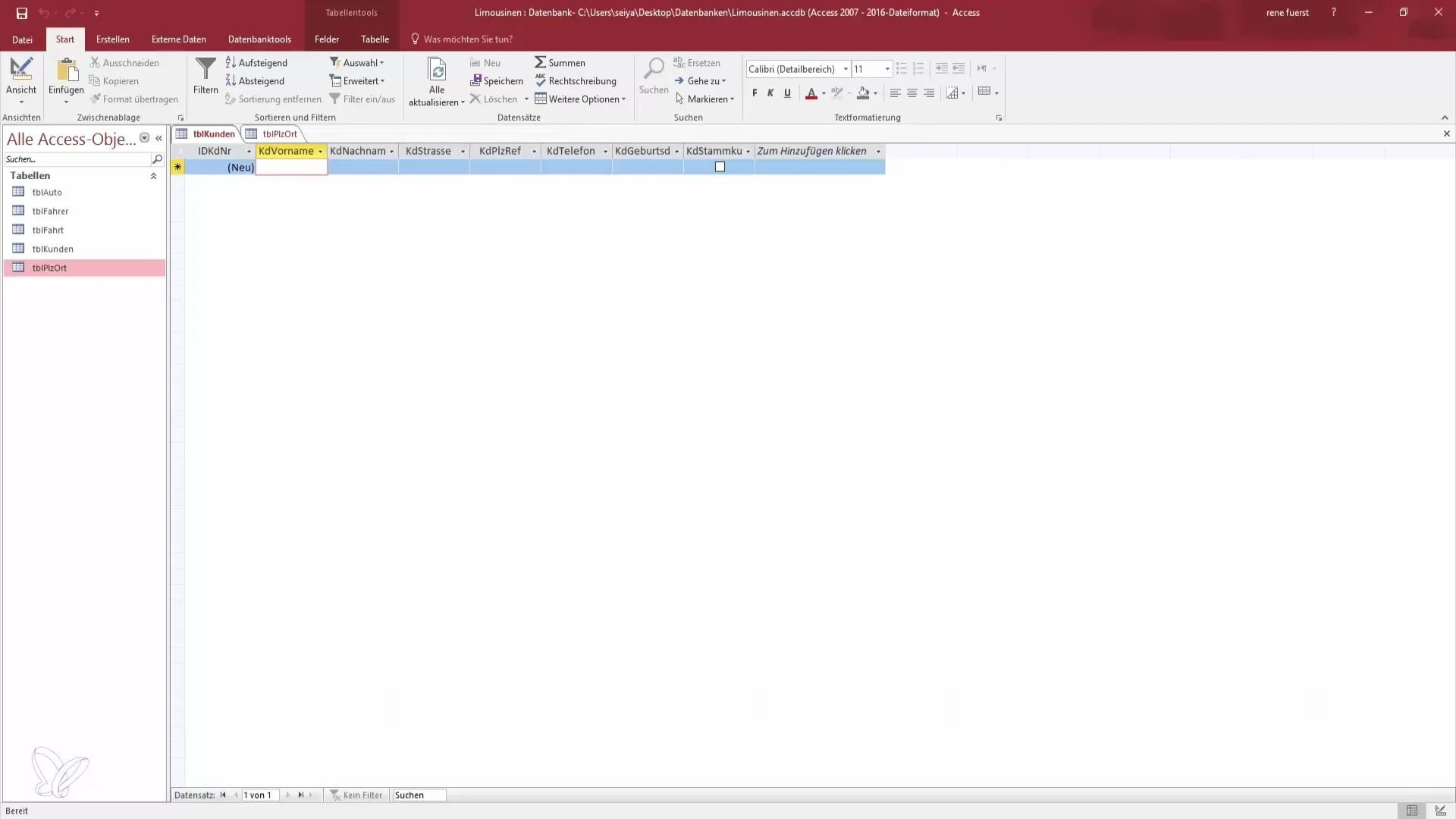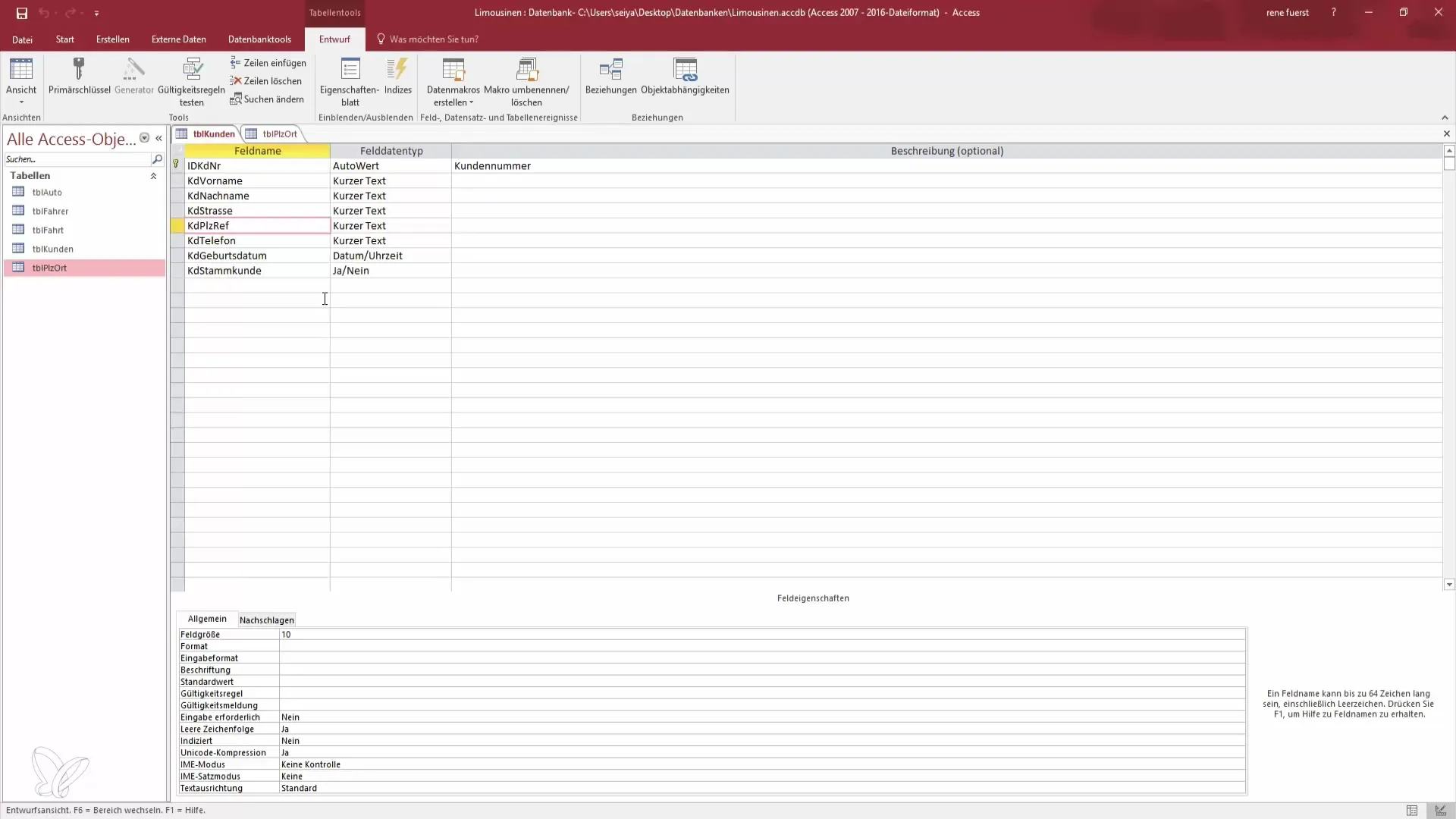Do you want to learn how to efficiently look up postal codes and their corresponding places in your Access database? In this guide, I will show you step by step how to implement this while avoiding errors. We will create a reference table and design a form for entering customer data. This way, you will have a clear overview of the postal codes and their corresponding places in your database in the future.
Key Insights
- Create a reference table for postal codes and places.
- Use combo boxes to ensure that only valid postal codes are entered.
- Optimize the display of data for a better user experience.
Step-by-Step Guide
To start looking up postal codes and places, follow these steps:
First, create some test data. Begin by creating a new record in your customer database. Enter the data such as name, address, phone number, and date of birth. For now, enter the postal code manually, for example, 99998. Here, we will initially create a placeholder for the place that you will look up later. The following screenshot shows how the data would look in the input form.

To eliminate a source of error and to automatically assign the place, you need a combination of postal code and reference table. This reference table will define the relationship between postal codes and places. You can enter some postal codes and their corresponding places, such as "99998, Weinbergen" or "1010, Vienna." Note that this is fictitious data that serves only for illustration purposes. Here, you can use the screenshot variable for an overview of the entered postal codes.
Now let's move on to creating the lookup field. Switch to the design view of your table6, where you created the "Postal Code" field. The next step is to edit the properties for the field. Under the "Lookup" tab, you can enable the lookup control and set it to pull values from your reference table.

A combo box allows you to select postal codes directly from the table. You need to specify the source for the postal code so the data is retrieved correctly. In the bound column, you indicate that the postal code is in the first column of your reference table. Additionally, you can set the data type and number of columns according to your requirements.
Save the changes and return to the list view. You should now see a dropdown menu for selecting postal codes. Check if the postal codes are displayed, and make sure that the presentation is clear and understandable for the users. If there is still no relationship visible between the postal codes and places, adjust the column count in the lookup field.
Now it's time to further improve the display. Go back to the design view and adjust the column widths to create space between the postal codes and places. The width could be, for example, 1 cm for the postal code and 4 cm for the place. Save the settings and take another look at the list view.
Once you have optimized the view, you will see that the postal codes and corresponding places are presented more clearly. You should now also be able to adjust the row heights and widths according to the values contained to further enhance the user experience. If necessary, change the list width to create more space for data presentation.
To ensure that only valid postal codes are entered, enable the "Limit to List" setting. This setting prevents users from entering values that are not present in the reference table. If they attempt to enter an invalid value, they will receive an error message. This helps to secure the quality of your database.
You have now laid a good foundation to avoid errors when entering postal codes. Users can only select valid values from the dropdown list. This is especially important to reduce input mistakes.
The lookup for postal codes and corresponding places is now effectively set up and will help you optimize your customer database. There is also the possibility to allow multiple values, but in this particular case, it is not necessary, as each postal code is assigned to only one place.
If you ever work with IDs instead of postal codes, you can easily adapt the steps described above. You can hide the ID column and only display the associated place names, allowing you to maintain a clear and user-friendly database.
Summary – Looking Up Postal Codes and Places in Access: Become a Data Hero
In this guide, you have learned how to effectively look up postal codes and places in your Access database. You were guided in the creation of your reference table and the combo box to ensure that only valid data is entered. You also learned about different options for displaying and improving the user interface.
Frequently Asked Questions
How do I create a reference table for postal codes?You can create a new table in Access and enter the postal codes along with the corresponding places.
How can I ensure that only valid postal codes are entered?Enable the "Limit to List" setting in the properties of the lookup field.
What is a combo box?A combo box is a control that allows users to select values from a list.
How can I optimize the display of postal codes and places?Adjust the column widths in design view to create space between the values.
Can I allow multiple values in a field?Yes, but generally it does not make sense for postal codes, as each postal code is assigned to only one place.


